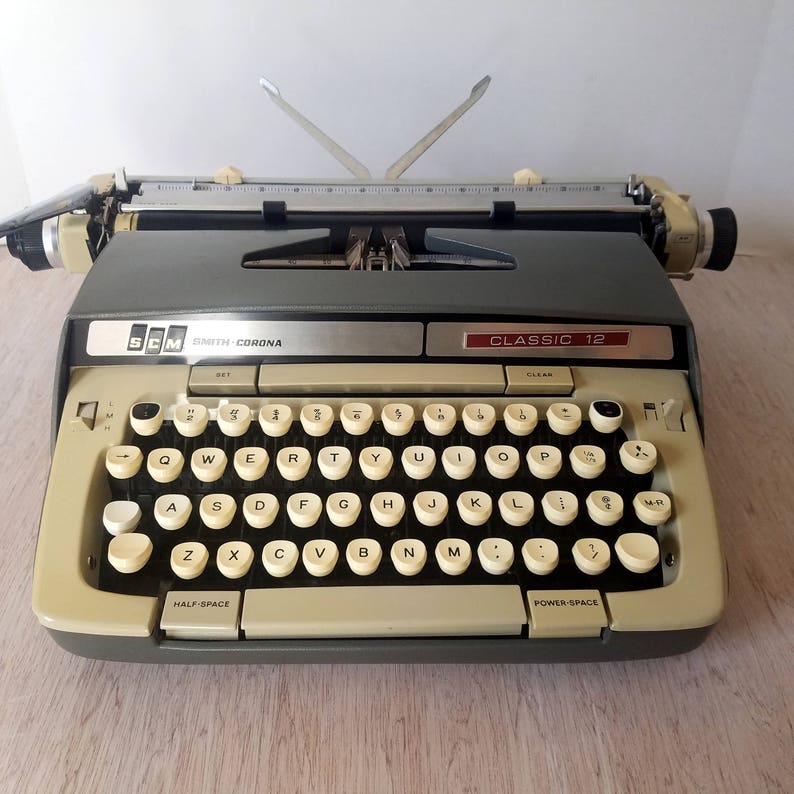

Smith & Corona made was the M209 Hagelin cipher machine. Along with making the bomb primers and rifles, employees at the Syracuse factory also made parts for pistols, machine guns, and torpedoes, amounting to over 64 million parts made during the war.Īnother interesting war product that L.C. The company not only made the rifles at the Syracuse factory but they also tested them there as well, firing the rifles deep within the innards of the factory. At peak production, the Syracuse factory made 23,000 rifles per month. Smith & Corona made thousands of these rifles for the military. Private companies such as Remington Arms in Ilion, NY and L.C. Smith & Corona became a prime contractor to make the Springfield M1903A3 bolt-action rifle, which although used mainly during the early 20 th century, remained a standard issue infantry rifle during World War II. Typewriter production gradually diminished through the spring and summer, and in October 1942, the WPB discontinued all typewriter manufacturing.Įven before the conversion order to discontinue making typewriters, L.C. David Nelson, head of the War Production Board (WPB), expressed an appreciation for the speed with which the typewriter industry “snapped into the war stride.” On March 6, 1942, the WPB froze the sale and delivery of all typewriters. Smith & Corona already had about forty government war production contracts and was ready to further curtail typewriter production in favor of making war products. In February 1942, the company received a war production conversion order from the U.S. In the fall of 1941, the company received its first war contract to produce primers for bombs at the Syracuse factory. Smith & Corona mimicked several other Onondaga County businesses by re-tooling to make war-time products. At that time, the company also made Corona adding machines in Groton, Vivid duplicating machines in Cortland, typewriter type in Geneva, and accessories and supplies in Illinois.Īs the U.S. Smith & Corona employed over 4,000 people in its factories in Syracuse, Groton, Cortland, Geneva, and Aurora, Illinois. The merged company made office machines in Syracuse and portable typewriters in Groton. merged with Groton-based Corona Typewriter Company to become L.C. Washington Street in Syracuse, doubled in size. The company became tremendously successful, and by 1911, the manufacturing plant, located at 701 E. Recognizing the potential of far greater financial rewards by making and selling typewriters, Smith sold the shotgun factory in 1889 and poured additional capital into the new Smith Premier Typewriter Company. Brown’s tinkering led to him creating the Smith Premier typewriter in 1886, the first typewriter to print both upper and lower case letters. While experiencing a financial windfall with his shotgun, Smith allowed Brown to experiment with a recently developed typing machine. Smith breech-loading shotgun, which became a very popular firearm and made the company a great business success. One of Smith’s employees, the brilliant and entrepreneurial Alexander T.

Smith, Maker of the Baker Gun, Syracuse, NY. Lymon stayed in Syracuse and continued making the Baker shotgun with his brother Wilbert, under the name, L.C. Three years later, Baker and Leroy Smith left the company and went to Ithaca to establish the Ithaca Gun Co. Lymon Smith, who moved to Syracuse from Lisle (Broome County), NY, founded a shotgun factory with his brother Leroy and a talented gun designer, William Baker, in 1877, known as W.H. But the Smith brothers’ rise to become one of the largest typewriter companies in the world started in a rather unconventional manner. Four Smith brothers – Lymon C., Wilbert L., Monroe C., and Hurlburt W. Smith & Brothers Typewriter Company:Īt the turn of the 20 th century, along with being known as the Salt City, Syracuse was also known as the Typewriter City, because typewriter factories were a common sight throughout the city. Now, the location is the site of the Center of Excellence building. The company stayed on this site until 1962 when it was replaced with an office building called Midtown Plaza that housed Onondaga Community College for a decade. Woodruff had previously served as Lieutenant Governor of New York State under three different governors (the only person in NYS history to do so), including Theodore Roosevelt. Woodruff was selected as president of the company. Smith & Brothers Typewriter Company bought a Washington and Almond Street site for their factory.


 0 kommentar(er)
0 kommentar(er)
